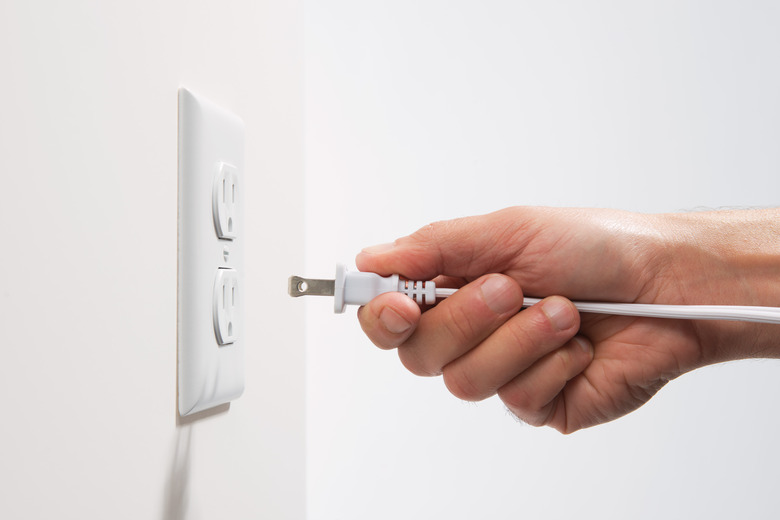How To Know Which Is The Hot Wire In A 2-Wire Plug
We may receive a commission on purchases made from links.
When electricity was new, all plugs had two prongs of the same size, and it didn't matter which side was which when you inserted them into receptacles. Because of the potential for shocks and fires this arrangement created, the National Electric Code introduced a third prong that was connected to a dedicated ground wire, and these plugs are common today. However, there has also been a return to two-prong plugs, but unlike the originals, they have prongs of different sizes. These plugs are polarized, and for proper wiring of a plug with two wires of this type, you have to know which wire is hot and which is neutral.
How Do Polarized Plugs Work?
How Do Polarized Plugs Work?
These days, most light-duty appliances and lamps have polarized plugs. Three-prong plugs are reserved for heavy appliances, power tools, and outdoor equipment. Appliances with polarized plugs are wired internally in a specific way to take advantage of the fact that electricity can only travel in a single direction through them.
Any appliance that has a switch is wired in a way to guarantee that no part of it becomes energized until the switch is turned on, so the hot wire must always connect to the switch. If you could reverse the polarity, you'd still need to turn on the switch to complete the circuit and operate the appliance, but you could also get a shock when the switch is off because the internal circuitry is energized. A polarized plug prevents that.
Lamp sockets are also wired to take advantage of polarization. The hot wire connects to the nub on the bottom of the socket while the neutral wire connects to the threads. That means you can safely touch the socket when there's no bulb, the lamp is plugged in, and the switch is on.
Which Prong Is Hot?
Which Prong Is Hot?
If a polarized plug is properly wired, the smaller of the two prongs is the hot one. That means the smaller slot in the receptacle has to be connected to the hot wire in the circuit. If the plug is an old-style one with identical plugs (some Japanese appliances still have this type of plug), you have to look at the wires to determine which is hot.
The hot wire in a residential electric cable is either black or red by convention. The neutral wire is white per NEC regulations. The wires inside a lamp cord with a translucent jacket through which the wires are visible usually also follow this color convention. If they don't or the cord isn't translucent, one of the wire jackets will have an irregularity. It may be ribbed or have a yellow stripe. This is the neutral wire. The other one is hot.
Find the Hot Wire by Testing
Find the Hot Wire by Testing
In the rare event that you can't visually identify the hot wire on an old-style two-prong cord and you plan on plugging the cord into a nonpolarized receptacle, you can use a multimeter to identify it. You might have to do this when replacing the cord on a lamp or appliance. A word of caution: The plug has to be plugged into a three-prong receptacle for this test, so the cord will be live. Make sure the wires are separated and that you don't touch them. You can get conclusive results by testing only one wire, so it's a good idea to cap off the other one just to make sure they don't touch each other.
Set the multimeter to measure volts and then touch one lead to the exposed wire and insert the other one into the ground slot of the receptacle. If the meter reads zero, you're touching the neutral wire and the other one is hot. If the meter reads 120 volts (or close to it), you're touching the hot wire. Pull the plug and mark the jacket so you can identify the wires in the future. You should also mark the top of the plug to be sure you put it in the same way next time.
